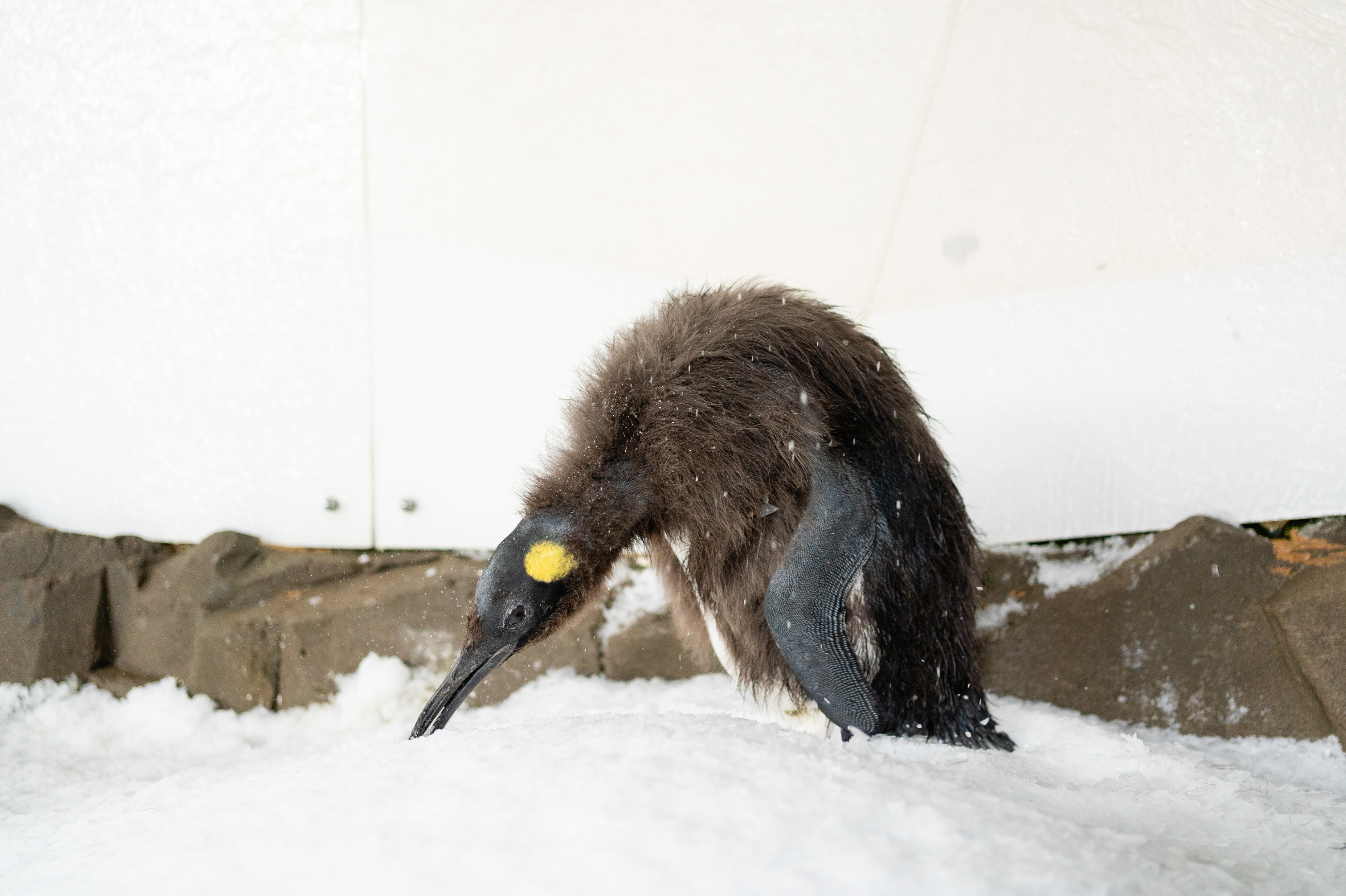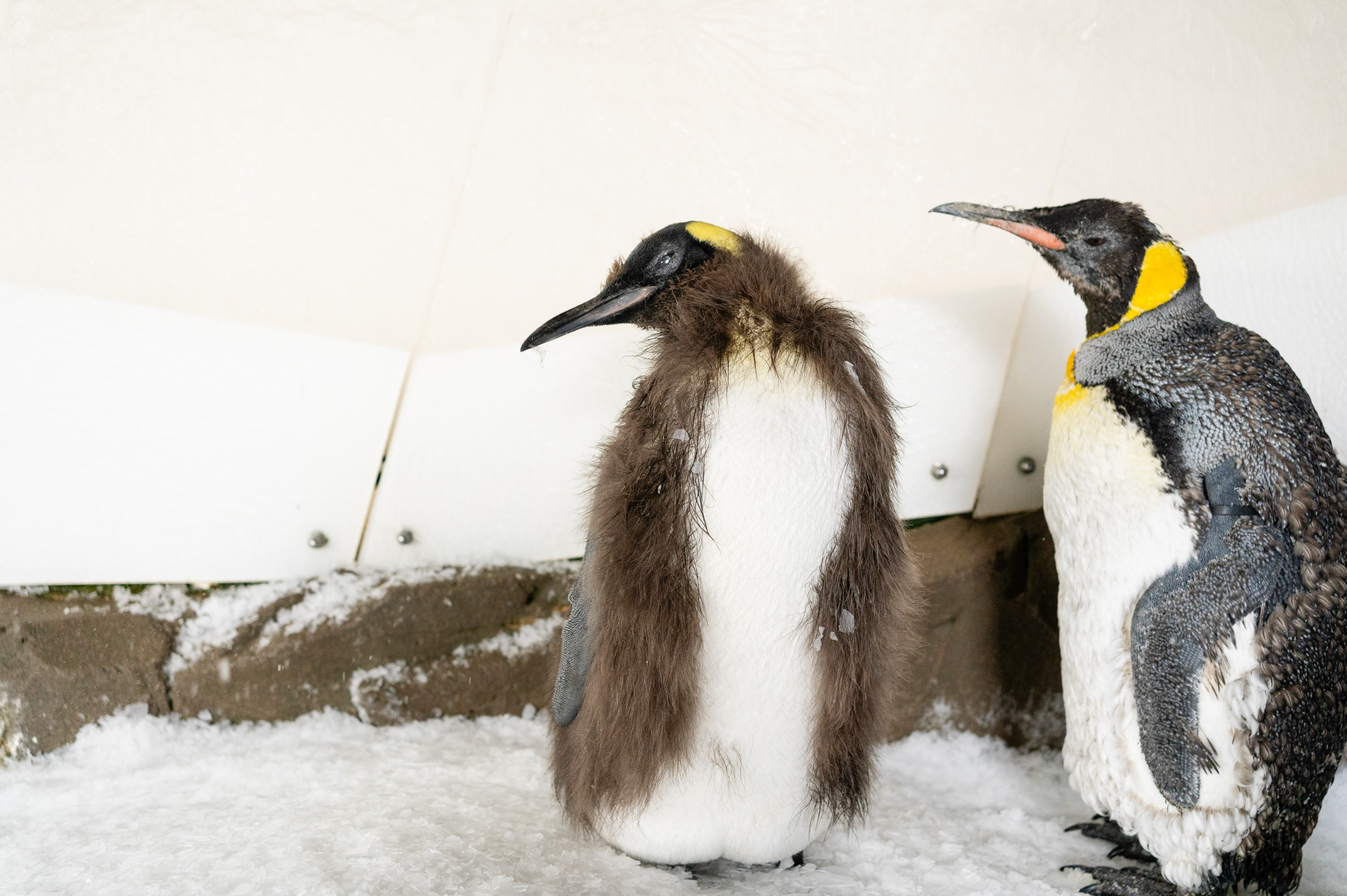
The best of Voices delivered to your inbox every week - from controversial columns to expert analysis
Sign up for our free weekly Voices newsletter for expert opinion and columns
Sign up to our free weekly Voices newsletter
I would like to be emailed about offers, events and updates from The Independent. Read our privacy policy
Pesto, the avian answer to the viral hippo Moo Deng, has started to molt.
The chick, who lives at Australia’s SEA Life Melbourne Aquarium, has started to fledge. In a kind of bird puberty, Pesto is losing his baby feathers and adult feathers are taking their place.
While king penguin chicks have fluffy, brown down feathers for the first 10 months of their lives, in adulthood they become white and black, with bright mustard-colored patches around their heads and necks.
The transition can last as long as six weeks and requires a lot of energy.
King penguin chicks often lose weight in the process. While each individual varies, they can be anywhere from 39 to 55 pounds at their peak.
Pesto weighed a whopping 46 pounds at nine months old and ate 25 fish a day. He’s the largest chick the aquarium has had.

During this period, penguin parents may reduce feeding their young, the aquarium notes. So, Pesto will have to rely on his stored fat.
Once he has fully fledged, Pesto’s feathers will be waterproof. This is due to an oil gland at the base of the animals’ tails. He will start swimming with the other king penguins shortly after that. Amazingly king penguins can dive up to 1,443 feet deep.

Pesto was born earlier this year. His best friend is his dad Hudson (his adopted father, after his biological father, Blake, the oldest and largest penguin at the aquarium was too tired to raise him) and his Aunty Queenie also takes care of him. Other young birds, including Honey and Sausage, are “very fascinated with Pesto,” according to a FAQ page set up by the aquarium.
In the wild, king penguins breed on subantarctic and temperate islands. They’re the second largest species of penguin, below emperor penguins. Their breeding population is estimated at 1,600,000 pairs.

While the species is not listed as threatened or endangered, previous studies have warned climate change could seriously threaten penguins like Pesto within just decades. Overfishing is also a major concern, forcing them to find new breeding grounds. Emperor penguins are a threatened species and live in Antarctica.
Those who want to see Pesto and his pals, especially before he finally sheds his brown fluff, don’t have a lot of time.
“Don’t worry he’ll still be just as adorable, he’ll just be rocking his new tuxedo!” the aquarium said.

 By The Independent (Science) | Created at 2024-11-14 02:13:30 | Updated at 2024-11-23 08:54:20
1 week ago
By The Independent (Science) | Created at 2024-11-14 02:13:30 | Updated at 2024-11-23 08:54:20
1 week ago








